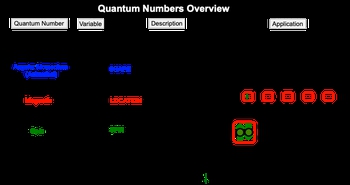To understand the relationship between quantum numbers and electron configurations, it's essential to first grasp how to number electrons within an electron orbital diagram. Electrons are numbered according to the Aufbau principle, which dictates the order in which orbitals are filled. This principle begins with the 1s orbital, followed by the 2s, then the 2p, and continues in this sequence through the various subshells.
By following this order, you can accurately assign numbers to the electrons as they fill the orbitals. Each electron configuration reflects the distribution of electrons among the available orbitals, and this distribution is directly linked to the quantum numbers that describe each electron's state. The quantum numbers include the principal quantum number (n), which indicates the energy level, the azimuthal quantum number (l), which defines the subshell, the magnetic quantum number (ml), which specifies the orbital orientation, and the spin quantum number (ms), which describes the electron's spin direction.
Understanding the Aufbau principle and the correct numbering of electrons is crucial for linking these quantum numbers to their respective electron configurations, thereby providing a comprehensive view of an atom's electronic structure.


